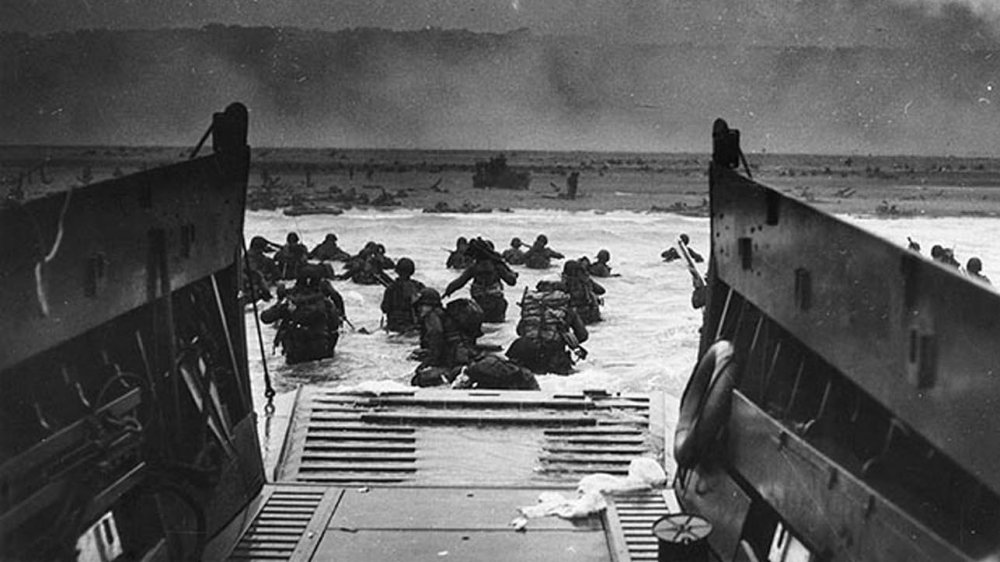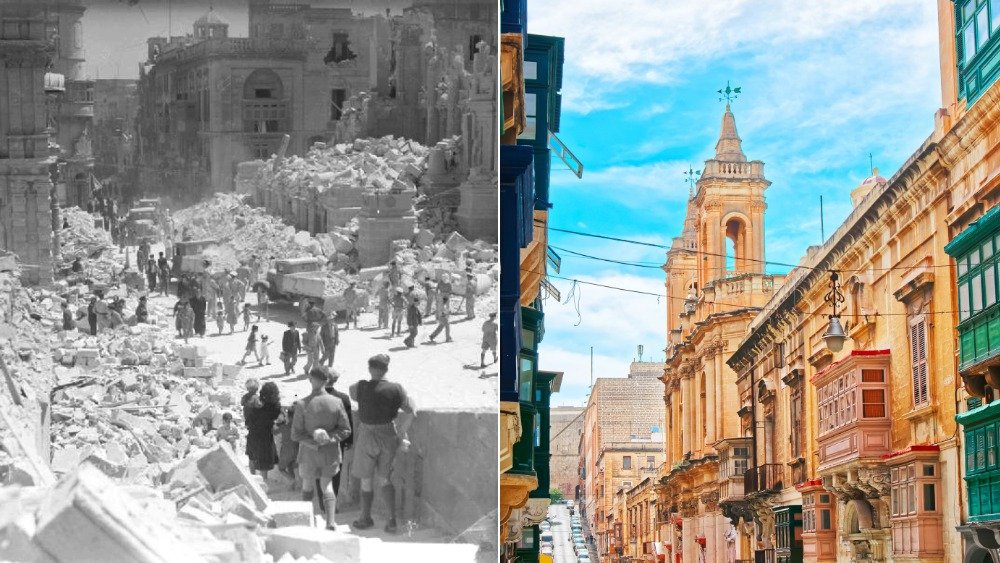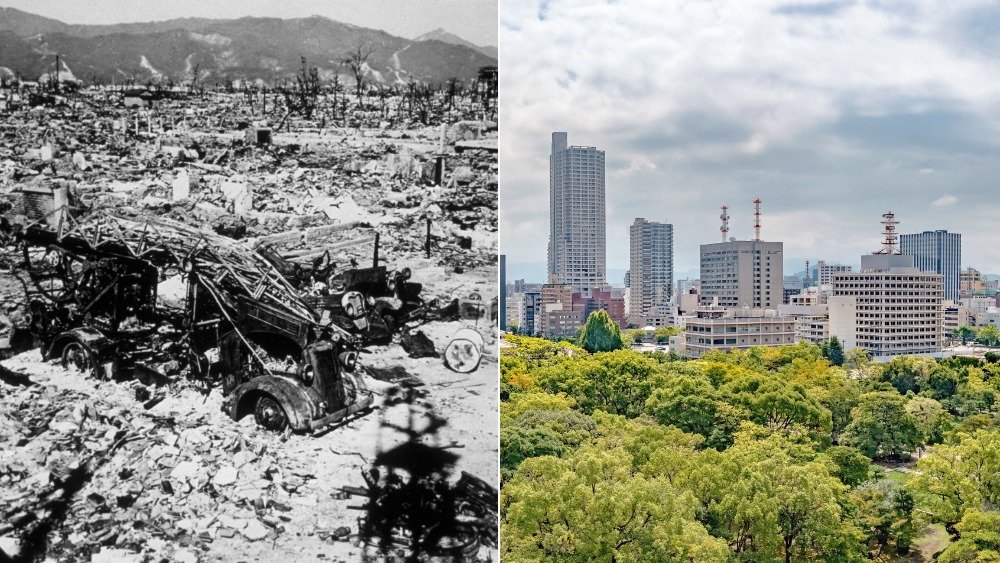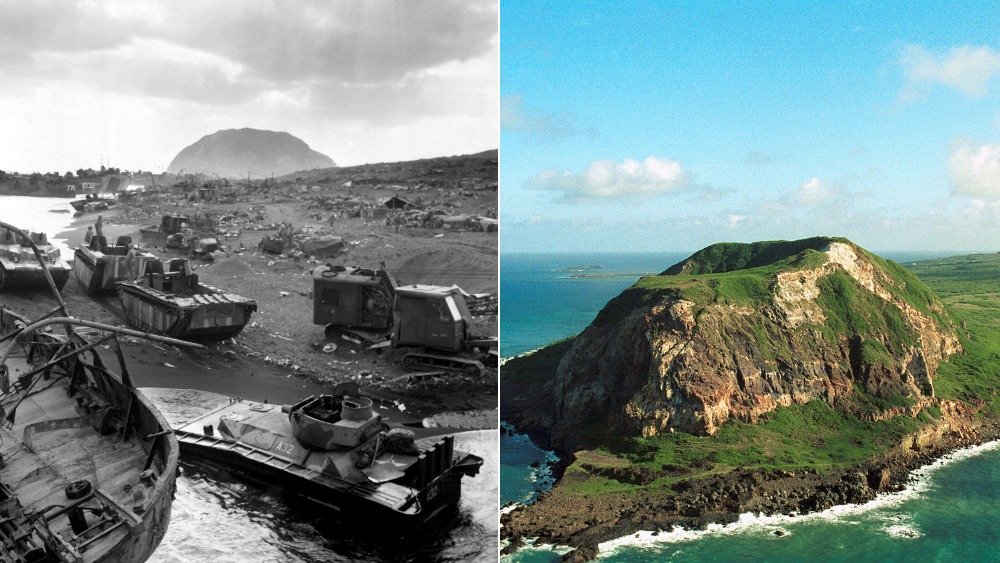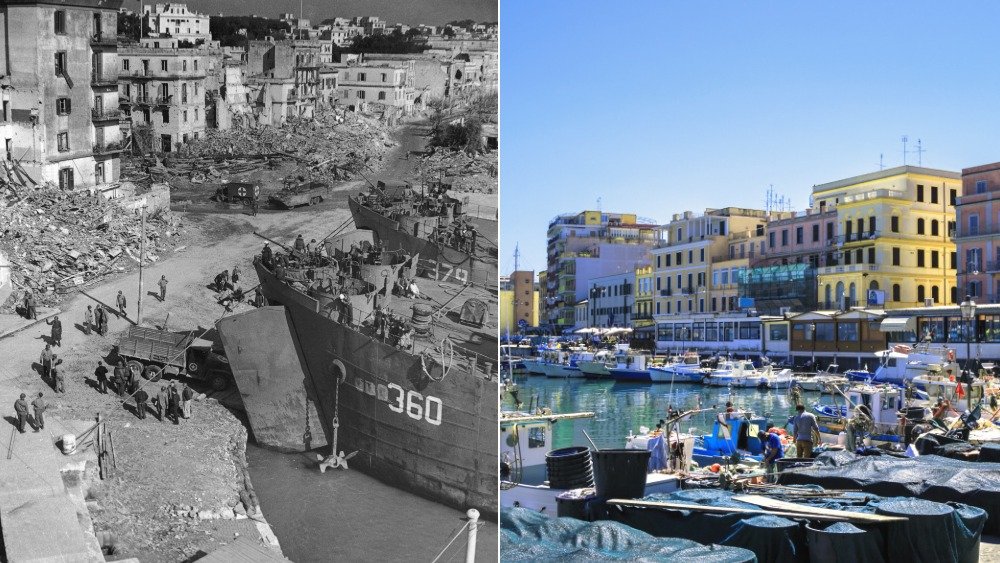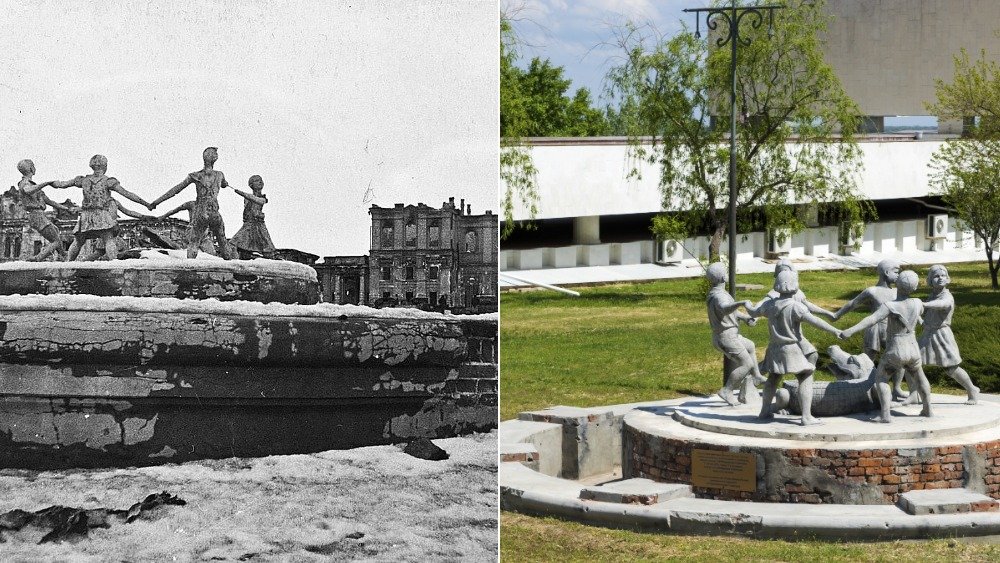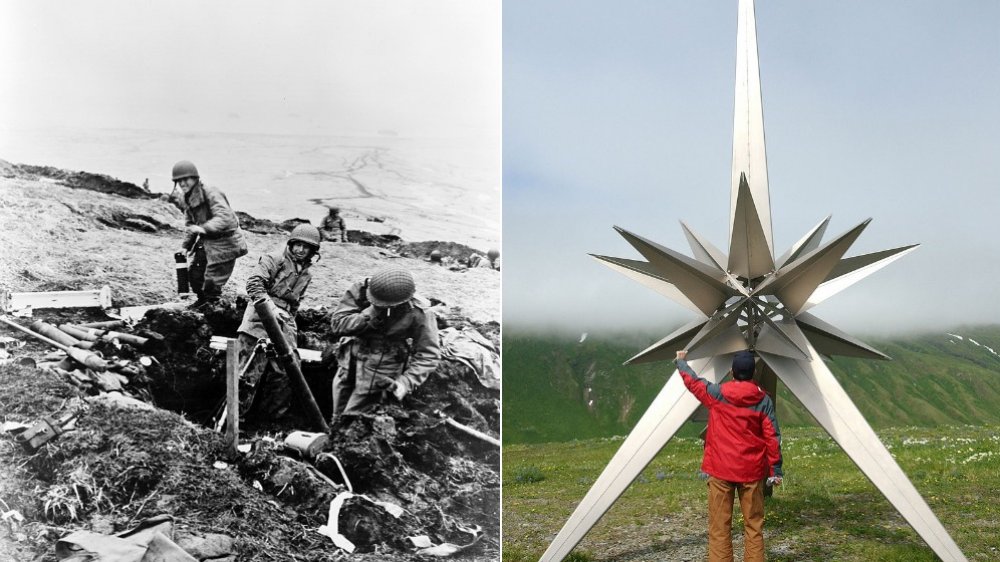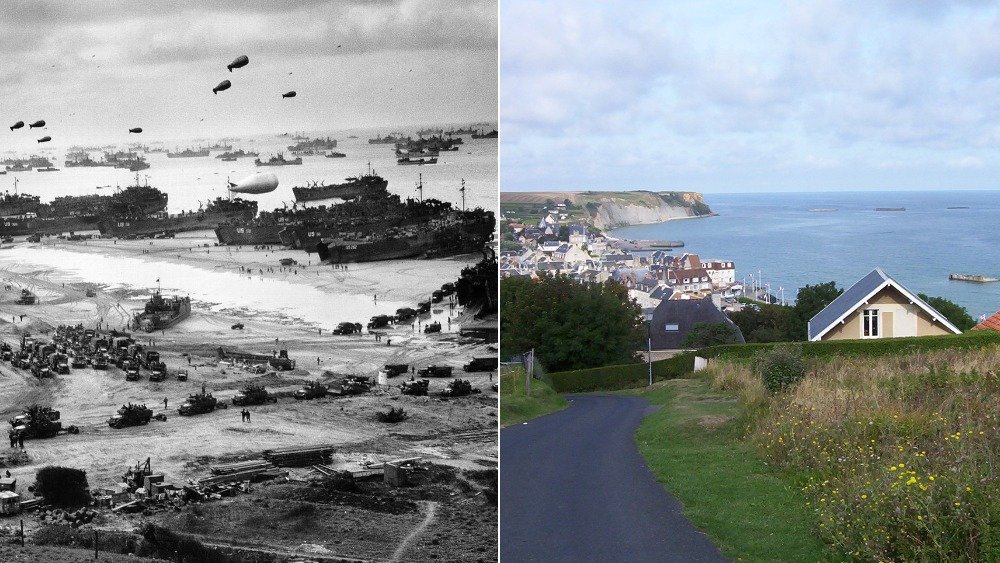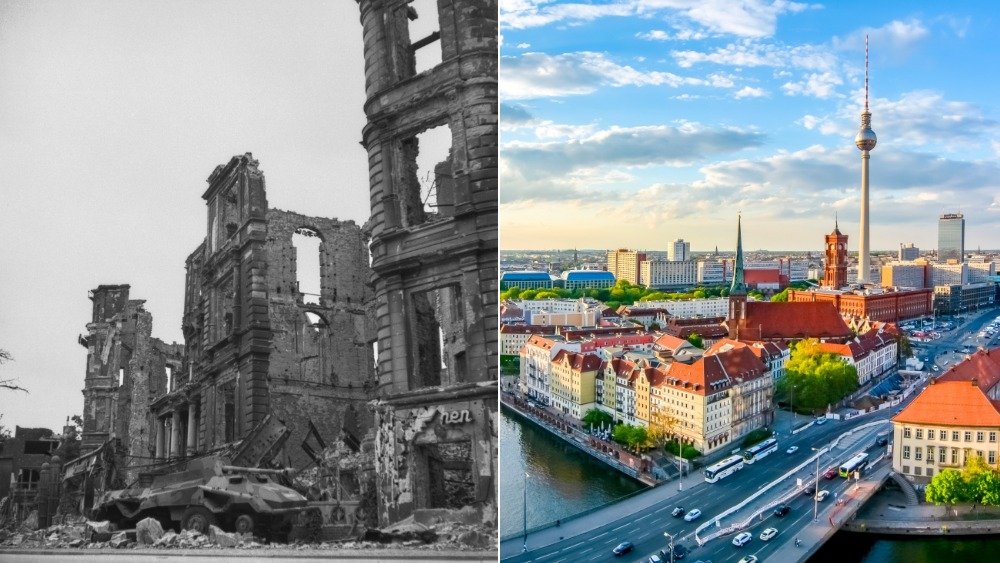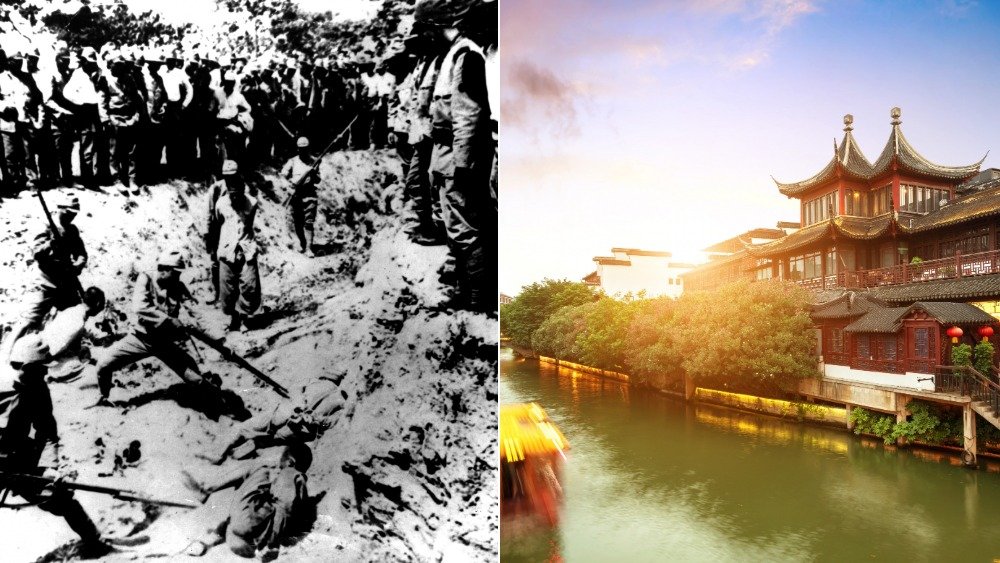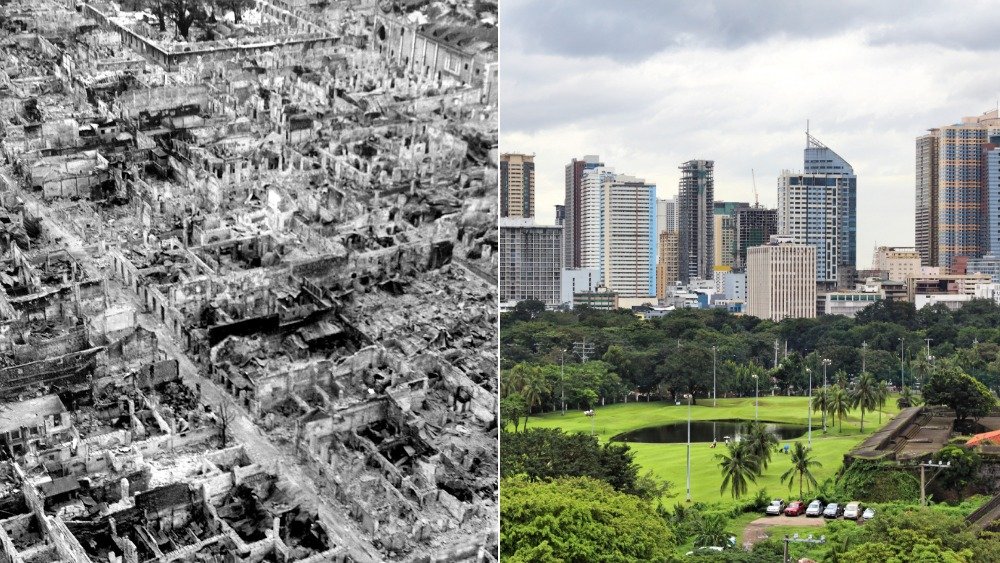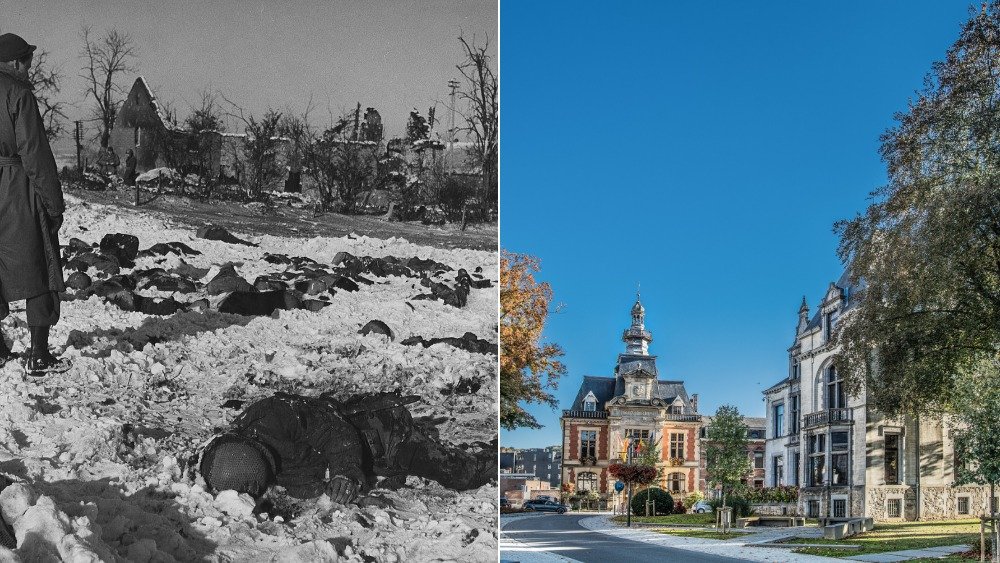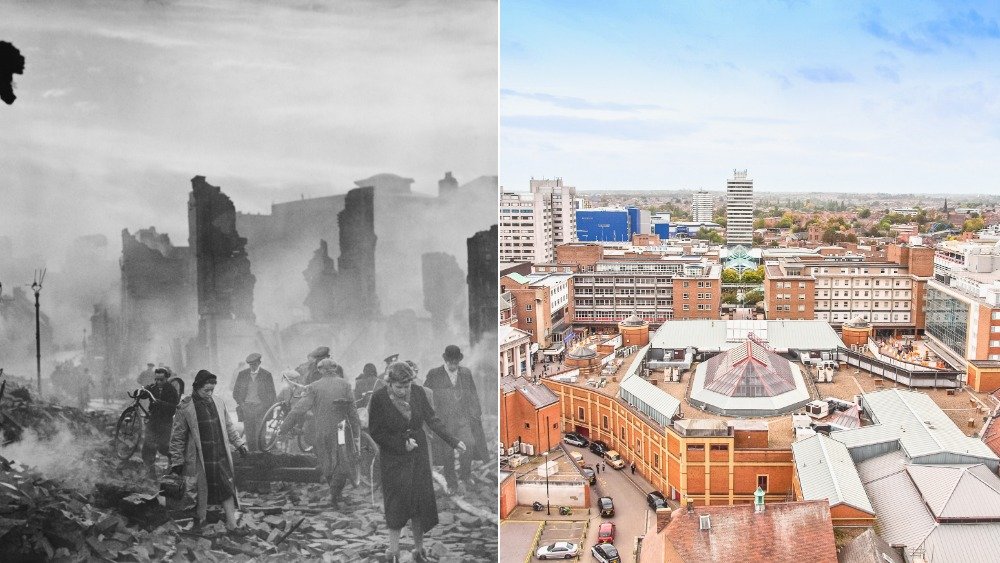What These War-Torn WWII Spots Look Like Today
World War II was the most destructive conflict in history, a global conflagration filled with stories of heroism and depravity on a scale never seen before or since. Many of the stories are common knowledge: The horrors of the Holocaust, the massive D-Day landings, and the carnage at Iwo Jima all have corresponding sights and sounds that we know well. Less well-known are the details of those tragedies, such as what exactly does D-Day mean? (Per the US Army, explanations vary.) For that matter, what was "the Bulge?"
We remember many of the battles. We remember the atrocities. We don't remember to check in afterward and see how — or if — the Earth healed her scars, whether buildings knocked down were ever rebuilt or if forests burned ever regrew. Here are 12 of the most atrocious events of the Second World War and what their locations look like today. Be warned, there is a steep angle into hell ahead.
Malta
Sitting just 60 miles below Sicily, Malta has long been a gateway to Europe for many aspiring military powers, beginning with the Phoenicians some 3,000 years ago. The Greeks, Carthaginians, Romans, and many others took their turns as occupying forces, the most famous attempt being the 1565 Great Siege of Malta, when 40,000 Ottomans crashed against the island for four months. Despite outnumbering the Maltese by at least five-to-one, the Ottomans withdrew in defeat, an upset so great that Voltaire said, "Nothing is better known than the Siege of Malta."
Just under four centuries later, the Maltese faced another set of invaders amid the most expensive siege of World War II. Malta was an "unsinkable aircraft carrier" said Winston Churchill, using it to launch British attacks against Axis ships and supply lines in the Mediterranean early in the war. So from 1940 to 1942, the Italians and Germans turned Malta into the most heavily bombed place on the entire planet. The island endured 3,343 air raids over two years, including the longest sustained aerial bombardment in history of 154 straight days. Some 15,000 tons of explosives destroyed over 30,000 buildings — on an island ten percent the size of Rhode Island.
Today, Malta is the safest country in Europe and second-safest on Earth and is known as an island paradise so stable and prosperous that millionaires and billionaires move there from around the world.
Hiroshima
Founded as a humble fishing village on the southern end of Japan's largest island, Hiroshima sits in a region with deep religious significance. In the late 16th century, the city of Hiroshima was formally established as a fortified castle town by one of Japan's many warlords, becoming a cosmopolitan center for intellectuals as well as for commerce. By the time Japan's feudal period ended some 300 years later, the city was a significant urban center.
The new Japan embraced modernization, and Hiroshima was an important cog in imperial Japan's industrial and military ascendancy. A manufacturing powerhouse, Hiroshima produced everything from cotton to steel. Its strategic location was bolstered with modern railways and ports, transforming the city into a critical transportation hub. By the 1940s, Hiroshima was building everything from civilian cars to naval warships and was an essential piece of Japan's war-fighting capability. During the war, Hiroshima had escaped the destruction of Japan's other industrial cities in large part, says Indiana University professor Scott O'Bryan, to provide the US military with "a virgin testing ground for measuring the effects of an atomic weapon on a modern city." When the atomic bomb detonated 2,000 feet above the city, instantly killing 80,000 people, Hiroshima became a synonym for devastation.
Hiroshima today, however, has emerged as a bustling city of over two million people. Designated a "City of Peace" by the government, Hiroshima now hosts regular international peace conferences.
Iwo Jima
Some 760 miles away from Tokyo, in the western Pacific Ocean, lie eight square miles of rocky volcanic terrain known as Iwo Jima (Sulfur Island). Before the war, over 1,000 people lived on the island, mining sulfur, fishing, and farming sugarcane until the Japanese military evacuated them all in 1944. In their place were 17-18,000 imperial Japanese soldiers, a bulwark against the coming Allied invasion of the Japanese homeland. The three airfields on the island ensured that any attack on Japan would first come through here. The following year, 70,000 US Marines arrived.
The ensuing carnage began with 72 days of intense bombardment. Author James Bradley quotes an optimistic American pilot telling a Marine that, "All you guys will have to do is clean up. No one could survive what we've been dropping." However, the Japanese defenders had dug in. Literally. A network of tunnels and caves protected the Japanese troops from the bombardment — saving them for a fight to the last man. Of the nearly 20,000 Japanese servicemen defending Iwo Jima, only 216 remained alive to be taken prisoner at the end of the five-week battle.
Nobody lives on Iwo Jima today. The island is home to a peace memorial, the rusted and ragged remains of the bunkers and equipment used in the battle, and the still-missing corpses of over 10,000 soldiers.
Anzio
The invasion at Normandy is typically thought of as when the Allies finally reached European soil, and it's often forgotten that the invasion of Nazi Europe actually began a full year earlier. In September 1943, the Allies landed in the Italian peninsula, what Winston Churchill referred to as the "soft underbelly" of Europe. It proved to be anything but. The rugged terrain and a determined enemy created some of the fiercest fighting of the entire war to that point, especially in the port town of Anzio.
Italy's geography is defined by long coasts separated by a spine of mountains and hills running down the middle of the country. The Germans had been using these features to great effect, and by January 1944, the Allied advance was halted. A second front was needed, and on January 22, 36,000 troops landed on the beach in Anzio. The Germans moved quicker than anticipated and within a day had surrounded the narrow beachhead. Squeezed between the coast and the hills, the British and American troops were subjected to five months of blistering attacks. Artillery rained down at random for 136 days, forcing the soldiers to half-crawl everywhere they went in what they called the "Anzio amble."
Just an hour south of Rome, Anzio today has regained what it had been for centuries: a relaxing Mediterranean getaway filled with amazing restaurants, beautiful sunsets, and some of western Italy's finest beaches.
Stalingrad
The city of Stalingrad doesn't exist anymore, renamed Volgograd, after the Volga River, in 1961 as part of Soviet leader Nikita Khrushchev's policy of de-Stalinization. Twenty years prior, however, another leader tried to erase Stalingrad from the map.
Hitler declared that the Germans needed "lebensraum" (living space) and that "there's only one duty: to Germanize this country [Russia]." To this end, per Encyclopedia Britannica, in June 1941, Germany invaded the Soviet Union in Operation Barbarossa, the largest invasion force in history. Russian losses were staggering, and the Germans advanced steadily. Stalin ordered the military to hold the line, "Not one step backwards." As a result, over four million soldiers on both sides, half of whom perished, slaughtered each other on the streets and outskirts of Stalingrad for five months. A bitter winter, typhus epidemic, and lack of supplies compounded the hellish misery for Germans and Russians alike. The fighting was so intense that a single four-story apartment was besieged by so many Nazi troops over two months that the defending Soviets had to reportedly keep pushing piles of German corpses down so that they could see clearly enough to shoot the next wave of attackers.
More Russians died in this single battle than Americans died during all of World War II, and the city was effectively leveled. In 1946, a new city was constructed. Volgograd today is known as "Hero City" and is filled with memorials to the millions of fallen heroes.
Attu
Almost exactly seven months after bombing Pearl Harbor, the Japanese invaded Alaska and controlled several thousand square miles of American territory for over a year. Alaska's location grants control over Pacific transportation and shipping routes. As General William Mitchell told Congress in 1935, "He who holds Alaska will hold the world."
The attack was launched simultaneously with the infamous Battle of Midway. The Alaskan Islands of Kiska and Attu were taken, and the 42 Aleut Natives living on Attu were sent to Japan, where half of them died in prison, according to the Anchorage Daily News. The Aleutian Island Chain stretches over 1,200 miles, and the US had to slowly build up to retake them. The Battle for Attu finally began in May 1943, and — fighting hand-to-hand in thick fog and 120-mph winds — it was among the worst in the Pacific Theater. Starvation and exposure to the bitter Alaskan cold killed more Americans than Japanese bayonets and bombs. "The whole damned deal was rugged," said Lt. Donald Dwinnell, "like attacking a pillbox by way of a tightrope ... in winter." In mid-August, after three weeks of heavy bombardment, US troops tried to repel the Japanese on Kiska but found that they had withdrawn two weeks earlier during a dense fog.
Today, Kiska is a part of the Alaska Maritime National Wildlife Refuge, and special permission is needed to visit. None of Attu's surviving residents ever returned, and today, it is America's largest uninhabited island.
Normandy Beach
By mid-1944, Germany was on its heels, and the Allied forces were finally ready to bring the war to Germany proper. After months of argument, Operation Overlord was authorized, and the beaches of Normandy would soon see 175,000 Allied troops and 50,000 vehicles land in the largest seaborne invasion in history.
After a 24-hour bad weather delay, the dawn of June 6 brought almost 7,000 British and American ships to the French coast. The German Army knew an attack was coming and had prepared a 2,400-mile-long Atlantic Wall of more than six million mines, thousands of machine gun bunkers and artillery batteries, tens of thousands of tanks, hundreds of miles of barbed wire, and other obstacles, plus tens of thousands of soldiers dug into the cliffs above the landing beaches. "Your task will not be an easy one," said General Eisenhower to the Allied soldiers, sailors, and airmen, "Your enemy is well-trained, well-equipped and battle-hardened. He will fight savagely." For 12 grueling hours, tens of thousands of Canadian, American, and British troops would fight desperately to get off the blood-soaked beaches. Amazingly, only about 4,400 Allied soldiers died.
Walk along the beaches of Normandy today, and you'll find decaying pillboxes and rusted pontoons — remains of the battle lie everywhere. Every picturesque town on the coast is also home to some sort of memorial or museum to the sacrifices made on D-Day.
Berlin
In April 1945, the Third Reich was crumbling, its army in full retreat, while Hitler cowered in his bunker in Berlin and Berliners prayed the Americans would reach them before the Russians. Since breaking their treaty with Russia in 1941, the German army and air forces had killed over 20 million Russians — revenge for places like Stalingrad loomed large in the imaginations of many. The Eastern Front was a slaughterhouse, a staggering 30 million dead soldiers and civilians on all sides. The Eastern Front accounted for 80 percent of Germany's military deaths. German General Gotthard Heinrici summed up Berliners' feelings when he heard the Soviets, and not the Americans, would be taking the city: "This is a death sentence."
Allied bombings of the German capital began in 1940. Now, 2.5 million Russian soldiers, 6,000 tanks, and more than 40,000 artillery pieces were preparing the final onslaught. The roads around Berlin were littered with the dead and dying of Germany's last defenders as ancient buildings were razed by artillery. The Red Army ravaged the city, 100,000 women were raped, and Berliners were further besieged as Soviet troops would "stop to ring numbers in Berlin at random" mocking whoever picked up.
Berlin today is once again Germany's capital and one of Europe's most beautiful and vibrant cities. Hundreds of corpses are still found there each year, per Deutsche Welle.
Nanjing
World War II started much earlier for the Chinese. For over a decade, hostilities had been simmering between Japan and the fledgling Republic of China until a precipitating incident in 1937 triggered a full-scale Japanese invasion, according to Encyclopedia Britannica.
Japanese troops quickly marched on the then-capital of Nanjing. "Generalissimo" Chiang Kai-shek, nominal leader of China, had no hopes of successfully defending the city and withdrew the majority of his army inland. The westerners who remained in the city's designated "safe zone" witnessed the Japanese arrival and the subsequent seven-week massacre of up to 300,000 Nanjing residents. ""I could go on for pages telling of cases of rape and brutality almost beyond belief," wrote Dr. Robert Wilson in a letter. Two officers held a contest to see who could decapitate 100 people the fastest. Over 20,000 women were raped, often brutally murdered afterward. In one gruesome account, a pregnant woman who resisted had her fetus ripped out and tossed to the side. German businessman John Rabe, China's Oscar Schindler who saved over 200,000 Chinese, wrote to the Japanese Embassy that he was "totally surprised by the reign of robbery, raping and killing initiated by your soldiers."
Now home to almost four million people, Nanjing is known as a tranquil city. The city's fine parks, scenic trails, and ancient architecture attract students, expats, and retirees from all over China and the world.
Manila
The day after Pearl Harbor, Japan invaded the Philippines, then an American territory. General Douglas MacArthur had lived most of his life in the Philippines and, hoping to avoid a futile and destructive battle for Manila, removed his troops. The city was quickly taken. Manila endured great privation and suffering over the next three years as casual brutality and starvation claimed up to 500 lives every day. "I was worried about a lump in my stomach," American prisoner Louise Goldthorpe wrote, "Then I found it was my backbone."
In February 1945, MacArthur's full failure to protect Manila was laid bare. As American troops returned to the Philippines that month, the ensuing 29-day battle to retake Manila was characterized by savage street combat that saw soldiers fighting house-by-house. The city once known as the "Pearl of the Orient" was leveled as the retreating Japanese troops engaged in an orgy of destruction and terror rivaling the Rape of Nanking. Sancho Enriquez hid his family to go find fresh water, returning to find "the mutilated bodies of our four children almost beyond recognition." Up to 100,000 civilians were killed, homes were systematically burned, countless women were raped, and cultural landmarks were destroyed.
Manila is now the capital of the Republic of the Philippines and home to nearly two million people. A thriving metropolis, Manila attracts over three million tourists a year and is the fastest-growing luxury market in the world.
The Ardennes
In late 1944, it appeared that the European war was nearly over. Allied troops were pouring in from the west, Mussolini's Italy had fallen, and Russia was devastating the German Army in the east. Then a seemingly reinvigorated German army launched a counteroffensive through Belgium and Luxembourg in mid-December — the Battle of the Bulge.
Their backs against the wall, the Germans fought ferociously and achieved an immediate success, punching through the American lines in the Ardennes Forest — creating the namesake "bulge." The winter of 1944-1945 was especially harsh, and temperatures regularly dipped below freezing. The Americans were unprepared for the harsh winter, and they fought in the ice and snow and fog under near-constant bombardment with no gloves, the lucky ones able to wrap their feet in gunnysacks. "It was the worst place you could be," said Paul Rogers of the 101st Airborne. The desperate Germans were merciless, slaughtering civilians and committing war crimes against prisoners. After five weeks, 89,000 casualties, and the thorough destruction of several villages and much of the Ardennes, the Americans continued their advance. "This is undoubtedly the greatest American battle of the war," said Winston Churchill, "and will, I believe, be regarded as an ever-famous American victory."
The Ardennes today is quiet, littered with shallow foxholes and the remains of the battle and those who fought it. The villages of the area are rebuilt, idyllic, and welcoming as ever.
Coventry
In 1940, less than a year after the war began, France had fallen, and Britain knew she was next. The epic route at Dunkirk, while nominally a retreat, foreshadowed the British fortitude that would quickly come to characterize their military and the civilians they protected. The Battle of Britain was fought in the skies over England, Scotland, and Wales as the Home Front become an actual front.
For eight months, British citizens faced a withering Luftwaffe bombardment, and it would be two years before British military casualties would outpace the death toll from the Blitz. Cities all over the nation suffered, but none demonstrated the shock and horror like Coventry, a manufacturing center in the middle of England with a renowned and beautiful medieval heritage. The iconic St. Michael's Cathedral had graced the Coventry skyline for seven centuries and was flattened in an evening. The destruction of the city was nearly total, and residents emerged from their shelters to an unrecognizable dystopia. Per the BBC, Jean Taylor was 14 when she saw "a dog running down the street with a child's arm in its mouth. There were lines of bodies stretched out on blankets." More than 400 German planes reduced over 41,000 homes to rubble, killing hundreds.
Coventry persevered, though. While the husk of St. Michael's remains, so does the magnificent Holy Trinity Church, the legend of Lady Godiva, and Coventry's many marvels that make it the UK's Capital of Culture.
